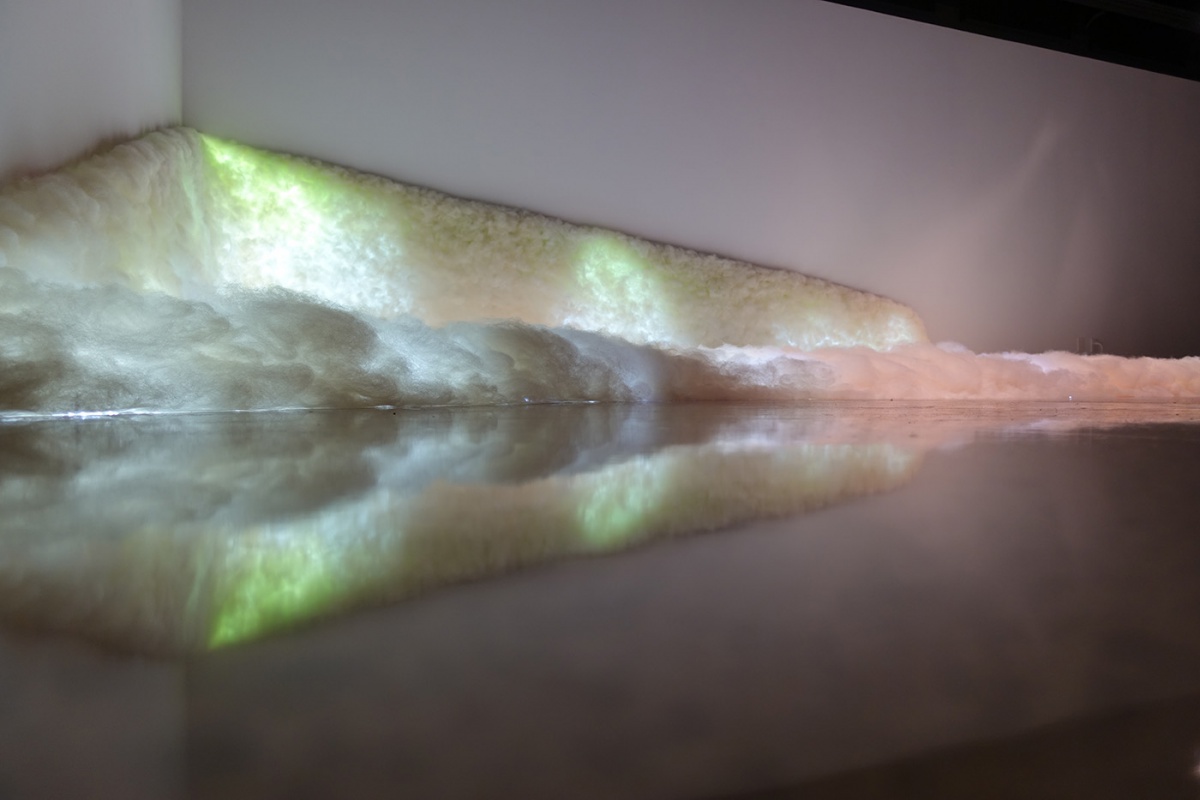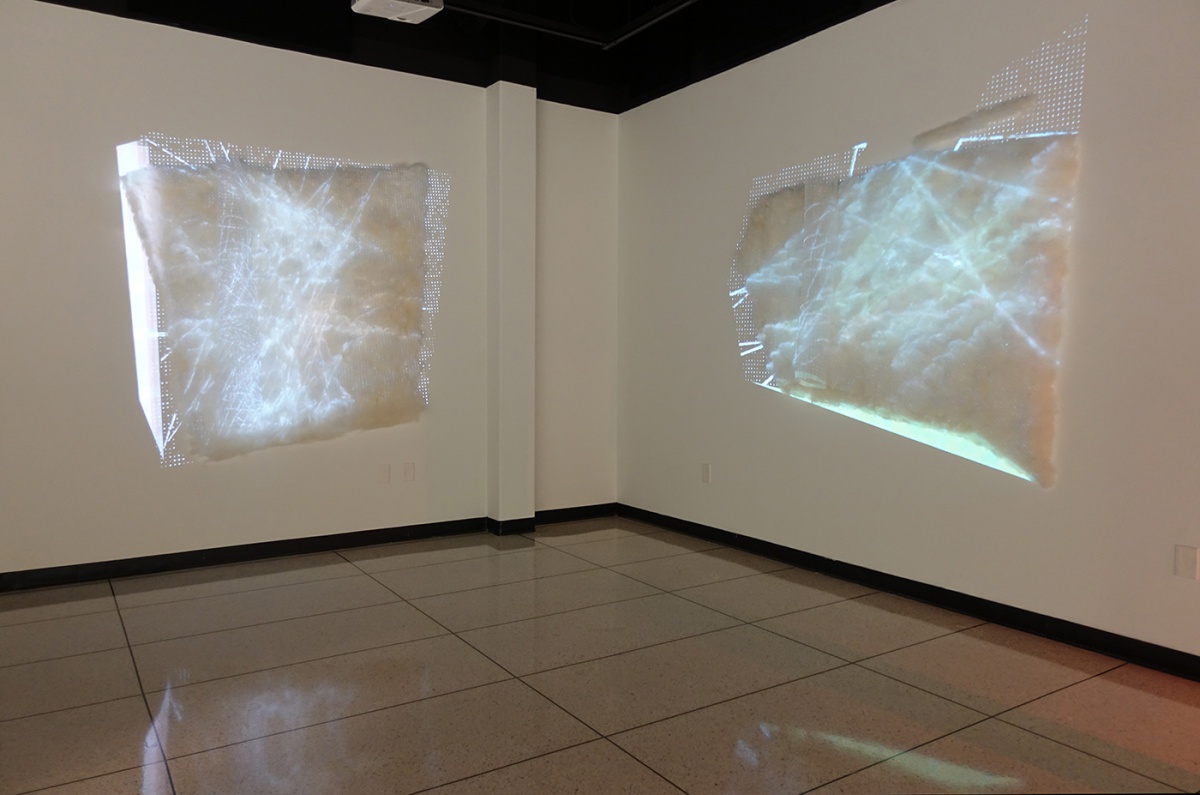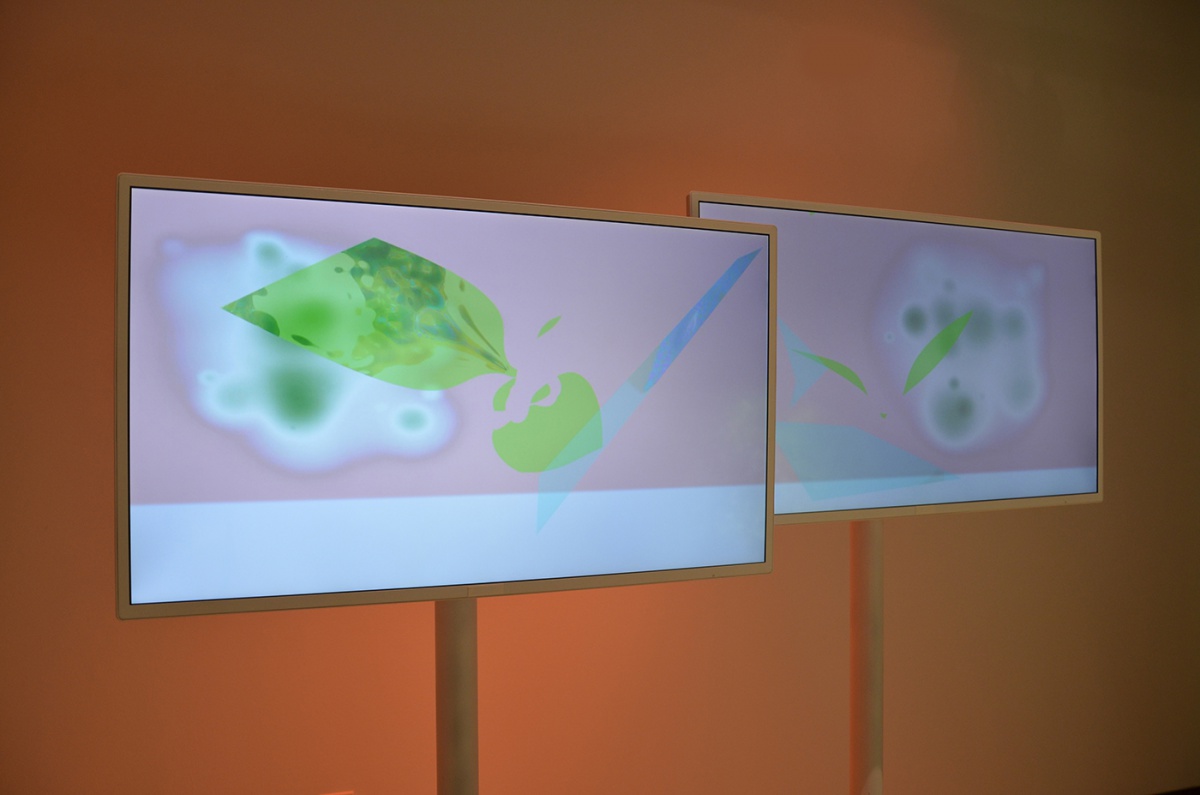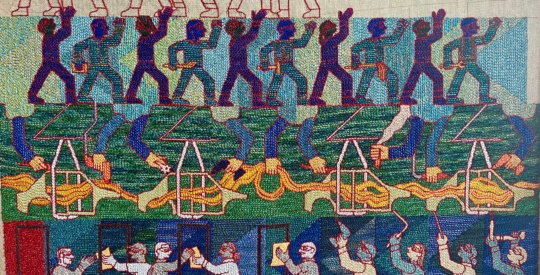
Atlanta-based artist Bojana Ginn makes sculptures and installations that interface between technology, science, and aesthetic materiality in search of noumena that will awaken a softer, kinder world. Her exhibition Phygital Muse, on view in the Mary S. Byrd Gallery at Augusta University through December 13, presents four works of art that provide an opportunity to consider how human perception is impacted when art and technology become enmeshed. The term phygital blends the physical and material aspects of visual art with the conceptual musings of technoscience.
Originally trained as a medical doctor in her native Serbia, Ginn came to the United States in 2002 to work as a researcher in the biology department at Emory University in Atlanta. In the lab, she found a correlation between drawing and genetics. Transcribing genetic code into protein was not unlike translating a line from one medium to another. Video editing called for cutting and rearranging sequences, combining previous images to create new ones, much like the process of art-making she remembered from her youth. Ginn’s interest in the creative potential of art was reignited through her scientific work.
For her final project in SCAD’s MFA program in sculpture six years ago, the artist drew on sources including biology, technology, genetic engineering, transhumanism, and mathematics, and organic structures such as DNA strands and proteins. Searching for material to make sculptures that would converse with technology and scientific data, Ginn recalled summers in the mountains of Serbia where the women in the family would traditionally retreat for sheep shearing. The wool was gathered, cleaned, combed, and then spun into yarn or felted for wearables. Ginn recognized this sustainable, organic fiber as an appropriate material to balance the technical and data-driven images she was creating.
Imposing on the intimate space of the gallery in Augusta, Solar Veins (2019) flows down from a corner wall and across the floor, an incandescent blanket of gently aerated sheep’s wool that creates a soft, cumulous mass. Seemingly randomized pastel colors emanate from filtered LED strands that snake through the wool like veins, as the title implies. The layers of light, filters, and organic fiber pour across the floor with captivating urgency, generating the metaphorical equivalence of a life force. The desire to fall into this womb cloud is irresistible, even transcendent.
In interviews, the artist draws connections between these scientifically derived but aesthetically conceived objects by noting that sheep’s wool and mammal hair share traces of protein. This warm and fuzzy kinship seems unnecessary given the luxurious beauty of Solar Veins. For an artist-scientist such as Ginn, however, it appears natural to underpin an aesthetic sensibility with a concrete rationale.

The most dynamic sculptures in the gallery are Digital Synesthesia 1 and Digital Synesthesia 2 (both 2019). Variations on a theme, each sculpture employs the sophisticated technologies of digital imaging, photography, two-channel video projections, and animation. The term synesthesia refers to a human condition where the perception of one sense is experienced through another sense, such as hearing color or seeing sound. Each wall sculpture is made with layers of material and projected light. A polymer mesh screen supports the top layer of aerated sheep’s wool, which is anchored discretely with monofilament. Through these transparent layers, a video animation of a linear structure moves unpredictably in the indefinite space. An additional projection of a black and white grid floating statically behind the animation further confuses spatial orientation. Alignment between the projected animation and the physical sculpture is irregular, creating a sense that the entire object is coming into being in real-time.
Of the two animations, Digital Synesthesia 1 is the more engaging. In a continuous loop of spatial revolutions, inversions, reversals, elongations, receding and advancing, the moving form regenerates perpetually. Both works are mesmerizing and contemplative. The moving light plays across multiple surfaces, challenging perception and suggesting a transference of one visual phenomenon to another in a never-ending dance of light, motion, and form.

Plastic Genes / Stereognostic Monologues (2019) consists of two looping videos shown on monitors. Each monitor contains slow video animations of three or four shapes that move gently over a soft pink field. A pod-like shape reminded me of fish egg sacks. Transparent green shapes float and overlap in the ambiguous space, suggesting vegetative forms. Blue geometric shapes tumble through the space. The pastel colors, slow motion, and amniotic space produce a meditative effect. The term stereognosis, or haptic perception, is the ability to identify the form of an object without any visual and auditory cues. There is a playful inversion of haptic perception in this work. What we see in this pair of video monitors is not present yet, but what will become. In this work, Ginn suggests the microcosm gives life to the macrocosm. Her multi-media installations weave science, technology, and physical materials into hybrid works of art that convey beauty and mystery.
Bojana Ginn’s solo exhibition Phygital Muse is on view at the Mary S. Byrd Gallery at Augusta University in Augusta, Georgia, through December 13.




